We’re getting closer and closer to living out our sci-fi dreams in a world connected by ultra-powerful smartphones and technology. Almost everything in the world is quickly available at our fingertips – except seamless access to emergency services. Think about it — you can get a pizza sent to your door by tweeting an emoji, but you can’t rely on the 9-1-1 system to quickly send emergency responders accurately to your location when calling on a cell phone.
The problem with 9-1-1 is its outdated infrastructure and technology. While we’ve become accustomed to the rapid pace of technology, the 9-1-1 system has remained largely the same for decades. It doesn’t matter how smart your phone is if the system you’re calling can’t keep up. Technology and infrastructure issues are often compounded by understaffing and underfunding, which leads to not enough call takers for the amount of calls coming in, many of which are non-emergency calls. Ultimately, this has created a situation in which the system many of us rely on in a crisis may not be able to deliver when we need it most.
6 Reasons to Think Twice About Relying Only on 9-1-1
1. If you call from a cell phone, 9-1-1 doesn’t know your location or callback number
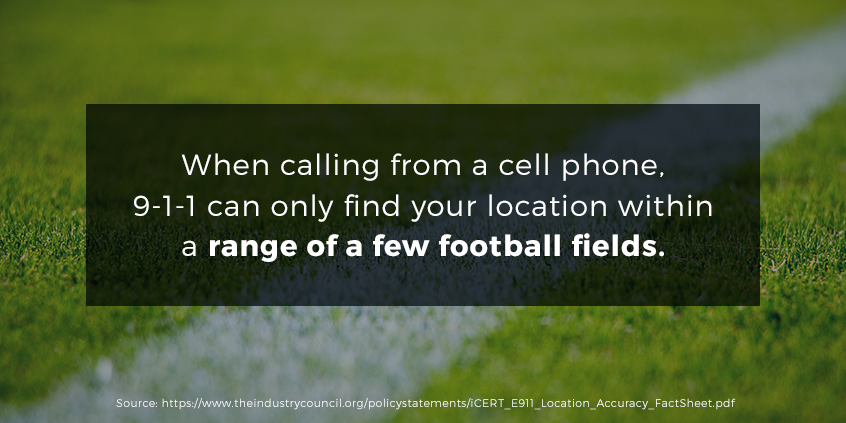
Yup, that’s right, even though your phone has all the latest features and a GPS so accurate your Uber driver can find you in a dark alley, that means nothing because the 9-1-1 system can’t relay location information to dispatchers. This matters when an estimated 70% of calls to 9-1-1 are made using cell phones. A USA Today report found your chance of 9-1-1 getting a quick fix on your exact location ranges from as low as 10% to as high as 95%. Often, triangulation is used to identify a cell phone caller’s location – but this process can only hone in on your location within 100 to 300 square meters. If you consider this happening in densely populated areas with buildings with multiple floors, just imagine the difficulty a first responder may have finding you.
This inaccuracy affects outcomes. If first responders could find callers just one minute faster, the FCC estimates 10,000 lives could be saved every year. Not having a callback number can make the situation worse – if the call drops, 9-1-1 dispatchers have no way of following up with you.
2. 9-1-1 call centers are understaffed and underfunded

Sometimes there isn’t enough funding to hire the right amount of people to staff a 9-1-1 call center. Additionally, many cities find it difficult to recruit and retain people for these high-stress positions, a problem exacerbated by non-competitive salaries. Curious if this problem is plaguing your local 9-1-1 local call center? Just try Googling “understaffed 9-1-1 dispatch” and the name of your town, as John Oliver suggested in his TV show, 911: Last Week Tonight with John Oliver.
3. People are clogging up the 9-1-1 queue with accidental calls
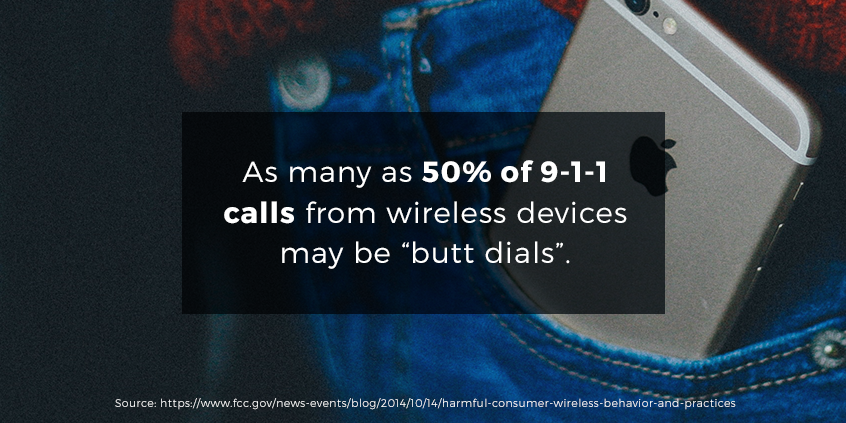
As if it isn’t bad enough that 9-1-1 doesn’t have enough people to take all the calls, there are many people making it worse by accidentally calling 9-1-1. For example, Google Researchers in San Francisco found that 30% of the wireless calls 9-1-1 received in a specific time frame were accidental. The National Emergency Number Association reports that phantom (unintentional) wireless calls account for between 25 and 70% of all 9-1-1 calls in some U. S. communities. Another issue occurs when people’s security systems are tripped accidentally, creating false alarms.
4. People are calling 9-1-1 for non-emergencies
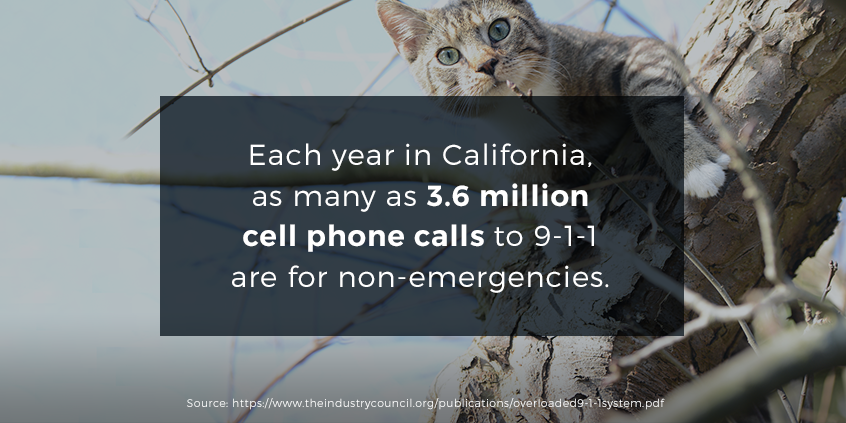
Unfortunately, there are many people using 9-1-1 for instances in which it’s not required. 9-1-1 should be used only in critical emergency situations when help is needed from police, fire, or ambulance immediately. Some people mistakenly call 9-1-1 to report a break-in that occurred the previous night, when they should be calling the non-emergency police number. Others misuse 9-1-1 to ask about public services, such as garbage pickup times.
While less common, some turn to 9-1-1 to report seemingly ridiculous problems they encounter, such as a lizard inside their printer, Vaseline on their front door knob, or a deli making a mistake with a sandwich order. Then there are those who intentionally abuse the system, making prank phone calls, diversionary calls to redirect police from a crime taking place, or deliberately exaggerating an incident to get police to come faster. These calls put undue strain on an already taxed system, potentially jeopardizing life-saving emergency response from the people who really need it.
5. When everyone calls 9-1-1 at once you may have a hard time getting through
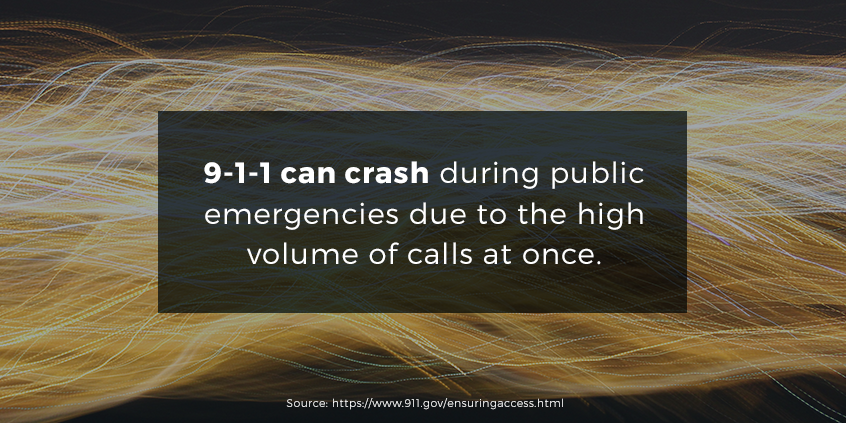
The 9-1-1 system was built before cell phones were in use, so scenarios in which an emergency occurs in public and everyone calls 9-1-1 at once reporting the same incident were far rarer than they are today. While people may be good intentioned and the emergency perfectly legitimate, an unfortunate consequence is that it’s usually not the only emergency occurring, and it can overwhelm cell phone towers, causing other calls to potentially be put on hold or picked up by cell towers farther away, creating confusion related to location for 9-1-1 dispatchers.
6. It’s hard to get 9-1-1 to send emergency help to your house when calling from another location
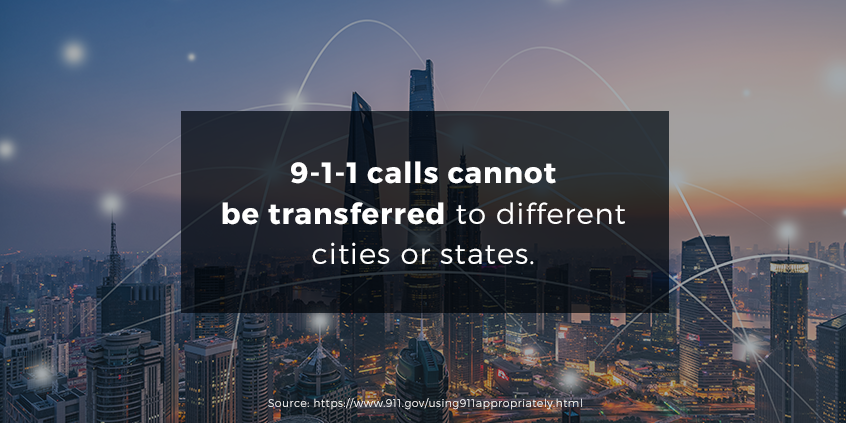
As flawed as the current system may be at attempting to find your location, it’s still designed to connect you to emergency responders closest to where you’re calling from. This makes it tricky to get help sent to your home, for example, when you’re on vacation, or if a problem arises at a vacation home and you’re not there. If you’re calling 9-1-1 to send help to another location, you should know that with few exceptions, 9-1-1 calls cannot be transferred to other jurisdictions except between call centers within a county and between adjacent counties. Your best option is to try to reach the 10-digit phone number for law enforcement in the community where assistance is needed.
If you’re not sure you can trust 9-1-1 in an emergency, you’re not alone. We here at Alarm Relay also saw a critical gap and designed a solution: the Rescu mobile app.
Get Help Faster with the New Rescu Mobile App
The Rescu mobile app was designed to help you avoid the antiquated 9-1-1 system. With Rescu, you can rest easier knowing you have the capabilities needed to get help fast when you need it most.

Rescu is paired to your pre-programmed location, so there’s no call routing or talking needed.
When you send for help, your alert will be directed to the nearest public safety answering point (PSAP) with the information about how to find you, including your address and cross street. You will not have to go through the manual routing process of providing your location information verbally to a PSAP, only to be routed to a closer one and to have to provide your information again. This means faster connection to emergency responders as well as the option to get help without needing to speak.
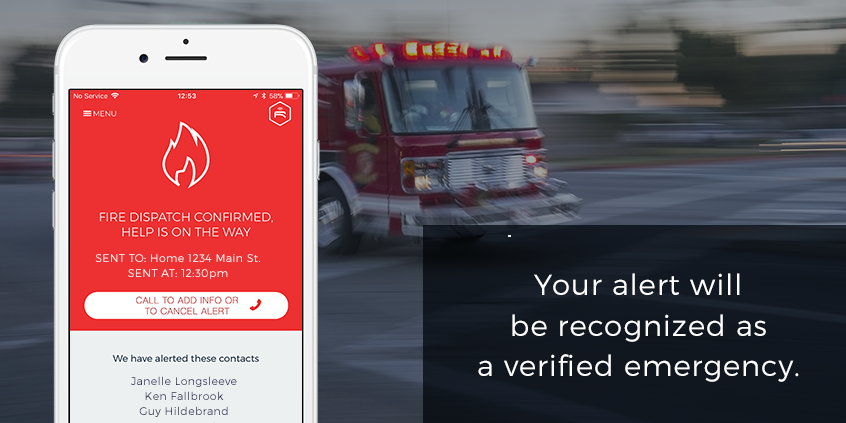
Your alert will be recognized as a verified emergency.
When you send an alert with the Rescu mobile app, Alarm Relay’s UL-certified, 5 Diamond Certified Central Station works with local emergency responders to coordinate response. This means the alert carries with it the advantage of being recognized by first responders as legitimized by a trusted source.
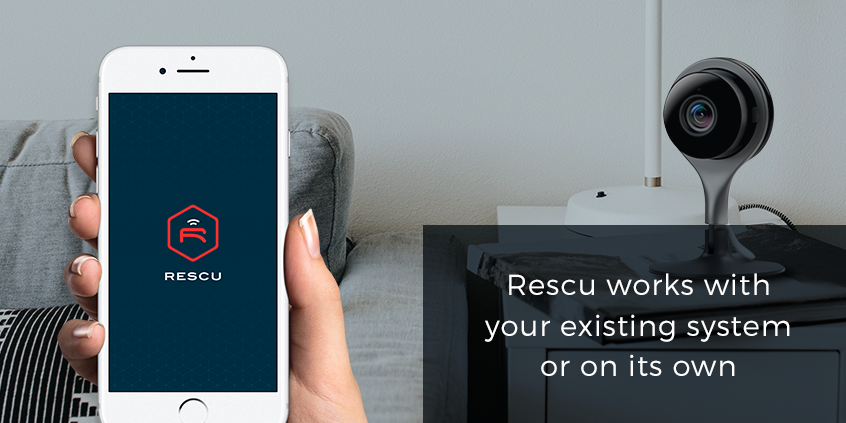
Rescu works with your existing system or on its own.
The Rescu solution is all about putting faster emergency response in your hands. If you already have professional monitoring with Alarm Relay or another company, Rescu lets you call for help without having to be near the touch pad or control panel. If you’re using a DIY camera set up for getting motion and noise alerts sent to your phone when you’re not home, Rescu allows you to take action no matter where you are. Finally, even if you have no security system at all, Rescu gives you better access to emergency responders, without the setup, installation, or cost of hardware.
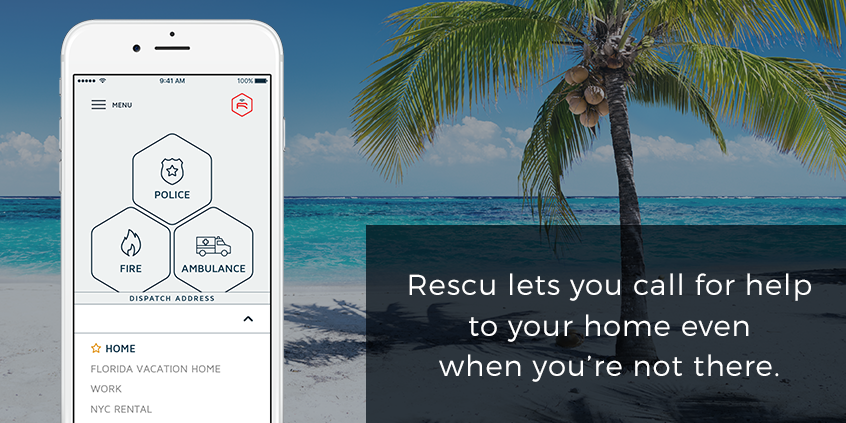
Rescu lets you call for help to your home even when you’re not there.
With Rescu, you can call for help to be sent to a specific location from wherever you are, because Rescu is ready to send help to a pre-programmed location. If you’re a vacation homeowner, this gives you the unique ability to send for help to your home, even when you’re miles away. Similarly, if you’re a frequent traveler, Rescu gives you the comfort of knowing that even if something happens when you’re away, you’ll be able to protect your family and property.
The Rescu mobile app is here to solve a real, life-threatening problem: 9-1-1 simply wasn’t designed to provide emergency response for the society we live in today. It’s not equipped to handle emergency calls from cell phones and it was never built for the flood of calls it receives daily. Why chance it when it really could be a matter of life-and-death? Learn more about the Rescu mobile app or download it now and get started using the Apple iOS App Store or Android Play Store.


